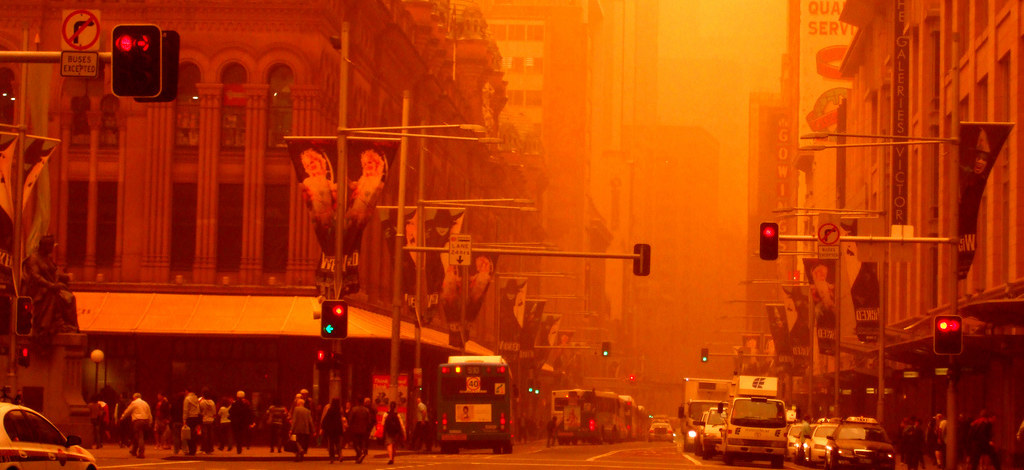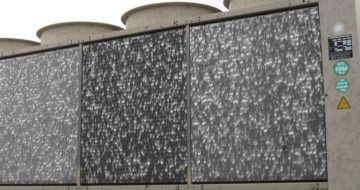
November 21, 2017 in Advisory Notes
Managing Resilient Buildings - Preparing for Heat Waves
Heat waves are a regular extreme weather event in Australia. With respect to building air conditioning systems this is commonly thought of as two or m...
April 9, 2018
It is important particularly during the drier months in Australia to plan for extreme weather events such as dust storms.
In September 2009 a dust storm swept across New South Wales and Queensland. The dust plume measured more than 1,000 x 500 km in area and affected Sydney, Brisbane and Canberra. Prior to this event significant dust storms occurred in the eastern states in February 2005 and October 2002.
Such storms can have a significant effect on building assets and their occupants. It is recommended that a Dust Storm Management Plan be prepared and activated to mitigate and manage this risk. This should be tailored to each building it covers. The following factors should be considered in this plan:
Ensure Air Handling systems are running on minimum fresh air. Manually over-ride all economy cycles as a minimum.
Advise Tenants of potential interruption to services and to address their HVAC systems. People with respiratory conditions (e.g. Asthma) should be advised to stay indoors in such an event.
Note differential pressure readings across filters of key air handling plant such that dust build up can be monitored during storm.
Postpone any planned generator tests until after the event and when outside air intakes and any cooling towers for generators are clean.
Set up additional monitoring and alarms on the BMCS for items such as pressure drops across filters, space temperatures for critical plantrooms such as switch rooms and lift motor rooms.
Consider storing rolls of temporary filter media on site. This can be temporarily installed to cover more critical outside air intakes or louvres of plant rooms containing air intakes.
Closely monitor main switch room ventilation. If the system runs on full fresh air with no filters, there is a real risk of switch boards filling with dust. If filters are installed these may become fully loaded quickly and excessive temperatures may result.
If the lift motor room is ventilated rather than cooled (typical for older buildings), monitor in the same way as main switch room.
For Air Handling Systems, keep a watch on any major change in filter differential pressure and for evidence of significant dust or organic matter entering the units.
If outside air systems have been shut down monitor CO2 levels within the occupied space.

Check filters on all Air Handling Units and fan coil units – determine if you have unusual static head pressures across the filter media. Replace or clean filters.
Base building cooling towers – Check the level of mud/dirt in the basins. There will be organic matter (nutriment for bacteria in the water) in the dust. Heterotrophic Colony Counts and Legionella levels may exceed allowable levels after the storm. Ask your water treatment specialist for advice; systems may require additional treatment. Back wash side stream filters if installed.
Open loop condenser water systems (e.g. tenant’s cooling water systems). Check systems as for cooling towers, particularly those serving critical equipment such as computer room cooling. The potential for blocked strainers & brazed plate heat exchangers will be high. Where these systems are owned by major tenants, prompt their checking of these systems.
Closed loop condenser water systems – watch for increases in pressure drops across plate heat exchangers.
Air cooled Condensers – likely to need a wash down. Evaporative coolers (particularly those with wet pads) will need also to be cleaned.
Gas fired boilers / domestic hot water heaters. – Combustion air intakes will be prone to contamination from dust. Check and or clean the burner assembly.
Arrange for the BMCS maintenance provider to check and clean sensors firstly in outside air intakes and then the remainder of the air handling systems.
Over the following weeks check heating coils and cooling coils in AHUs for cleanliness and organic growth. Cleaning may be required.
Check the cleanliness of air handling plantrooms, particularly those which are used as an outside air plenum. It may be necessary for a clean of the plantroom. Also check mechanical plant switchboards for evidence of dust entry.
Check any VESDA® systems within the building. These may be contaminated could go into alarm / fault. Clean the ambient pollutant reference sensor.
All buildings should have a documented Dust Storm Management Plan, especially critical facilities such as Hospitals and Data Centres. Ideally this Plan should be part of a broader disaster recovery / extreme weather plan.
Extreme weather events have become more common and severe. For more information on preparing buildings for a changing climate please also read the Advisory Note: Managing Resilient Buildings for a Changing Climate.
download pdf
November 21, 2017 in Advisory Notes
Heat waves are a regular extreme weather event in Australia. With respect to building air conditioning systems this is commonly thought of as two or m...

April 10, 2015 in Advisory Notes
As the effects of climate change become more evident, it is apparent that facilities and their operation need to adapt. Built environments must become...